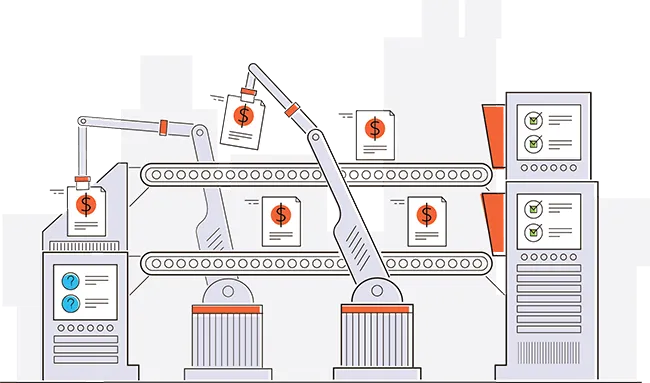Tribal Knowledge is a Risk in Your Organization
Table of contents

Related
What is Tribal Knowledge, and Why Should I Care?
Six Sigma experts(opens in a new tab) describe tribal knowledge in the following way:
"Tribal knowledge is any unwritten information that is not commonly known by others within a company. This term is used most when referencing information that may need to be known by others to produce quality product or service."
Management may not be aware of the many pockets of tribal knowledge (also known as "institutional knowledge"), so they do not understand the risk to overall operations and profitability.
- Sometimes, tribal knowledge is incorrect. The danger of incorrect tribal knowledge propagates when new employees are informally educated by their "older and wiser" colleagues. Incorrectly used equipment or incorrectly interpreted results can harm product and service quality and employee and consumer safety. It can lead to an overconsumption of raw materials and avoidable breakdowns in equipment.
- When an experienced employee leaves the company or suddenly goes out on leave due to a personal illness or emergency, the tribal knowledge gap can bring operations to a grinding halt.
How Does Hidden Knowledge Happen?
There are two fundamental causes of tribal knowledge issues within a business. The first is individual employee behavior, and the second is a management failure.
Employees may be hoarding tribal knowledge for several reasons:
- Job security – Some employees like to be the only ones who can perform a specific task or fix a problem. They are happy to field calls for help during their time as a trade-off for job security. Other employees like leading everyone to believe their responsibilities are the most challenging and time-consuming in the organization when their work is quickly and easily completed daily. Their tribal knowledge keeps their job from being eliminated and helps them avoid being the target for additional responsibilities.
- Ego Boost – Tribal knowledge hoarders enjoy feeling important when repeatedly asked to save the day. It is easy to spot them, as they are widely known throughout the organization as the go-to person for a particular need.
- Aversion to Documentation – Even when management launches a business process documentation/improvement initiative, a few employees will not draft process documentation or even sit with a process analyst. Management pressure may be required to get them over this hurdle.
- Furtiveness about Cutting Corners – Some knowledge hoarders know that there is an official way of doing things, but they have cut a few corners to make their tasks easier. They keep their secret processes under cover until someone discovers a quality impact.
- Lagging adopters of new enterprise software – These are the end-users who never embraced the new enterprise systems. They rely on secret spreadsheets and email chains to avoid learning to use new software.

Management (at several levels in the organization) fosters the perpetuation of tribal knowledge by the following behaviors:
- Misunderstanding business maturity – Senior management may fail to recognize the organization's stage in the typical business lifecycle. For example, start-ups are run almost entirely on the tribal knowledge of the founders and the inner circle. That works well for a time, but it will struggle if a startup tries to expand too quickly without documenting its process knowledge and using knowledge transfer best practices. Some businesses have had a low turnover for many years and are facing a tsunami of retirements. If they have never formalized their business workflows, much of their tribal knowledge will vanish within the next 2 -3 years.
- Playing favorites – Let's face it. Within any business, there are always the individuals you like to interact with and those who make every encounter difficult. A codependent relationship may exist between a manager who hates conflict and a tribal knowledge hoarder who needs constant ego-boosting. They allow their favorites to skate by without documenting their workflows.
- Aversion to automation – Many businesses still rely on manual workflows spanning multiple departments. If managers are unaware that there are now low-cost workflow tools to speed up and improve the quality of these processes, they will allow them to persist.
How Do I Find and Address the Problem?
If you understand the behaviors described above, you will find it easier to hone in on your tribal knowledge issues. Here are some examples and suggestions for addressing them.
If you repeatedly hear that Joe in IT is the only one who can restart that process.
Joe needs to document the restart procedure and personally train at least one other competent staff member to perform this procedure. Complex procedures may be the basis for automated workflows that will guide Joe's colleagues through the procedures and automatically notify the impacted users of the status.
If you see uneven quality or speed from shift to shift or employee to employee as you review certain operations.
Send process analysts to interview shifts and several employees who perform the same work. Review the variances - some are perfectly allowable, but others are likely to cause harmful deviations in quality or speed. Make a management decision on the right way to perform these processes - they are often rich targets for workflow automation. Train employees, engage in knowledge transfer, and monitor their performance afterward.
If departmental productivity dips or feels chaotic after a seasoned employee departs or retires.
This is difficult to fix after the employee leaves, other than by hiring that individual back as a consultant. Avoid future pain by addressing the issue before the next departure. Choose someone to shadow employees leaving and document their work before the departure date. It's also a great time to look for automation possibilities.
If you have managers who spend their days interacting only with other managers, sitting in meetings, and managing employees by email.
Require all managers to spend part of their day managing by walking around (MBWA(opens in a new tab)). This practice will allow them to spot the tribal knowledge hoarders in their departments and take the necessary steps to reduce the risk. Challenge all departmental managers to find additional ways to automate by including a process improvement perspective in their performance appraisals.
In addition to these targeted tribal knowledge interventions, you can address this problem organization-wide or departmental by mounting a business process improvement (BPM) initiative. BPM gives you a roadmap of all the routine and non-routine processes needed to run your business and helps you document the roles, responsibilities, and steps involved in those processes.
This information protects operations from process errors, process deviations, and loss of knowledge when employees depart. It's also easier to see where additional automation can make operations more efficient. Automated workflows are repeatable processes that can reduce the risk that tribal knowledge imposes on your business. If you are new to BPM, our Complete BPM guide(opens in a new tab) can help you each step of the way.








